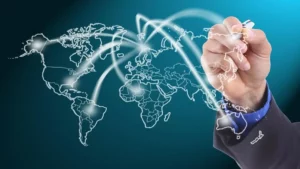GS-2: International Relations

Key Points:
- The article explores a major reconfiguration of the global order, moving from U.S.-dominated unipolarity post-Cold War to a multipolar framework.
- The rise of China and India, coupled with the Russia-Ukraine conflict, drives this transition.
- Post-World War II global institutions struggle to adapt to these changes.
- The COVID-19 pandemic exposed supply chain vulnerabilities, accelerating regionalization and self-reliance trends.
- India must strategically navigate this evolving landscape by leveraging its strengths and refining its foreign policy.
In-Depth Analysis:
- The U.S. shaped global norms post-Cold War, but rising powers are challenging this dominance.
- China’s economic and technological growth has reshaped global power dynamics.
- The Russia-Ukraine conflict exposed weaknesses in existing security frameworks.
- Supply chains are being restructured for resilience, potentially fragmenting the global economy.
- Technology, especially AI and telecommunications, is a key battleground for global influence.
- The West must engage equitably with emerging powers like India and China.
- India’s growing economy, tech capabilities, and democratic values position it to shape the multipolar world.
Strategic/Geopolitical Terms:
- Multipolarity: A global system with power distributed among multiple nations.
- Geopolitical Realignment: Shifts in national influence leading to new alliances.
- Global Governance: International rules and institutions managing cross-border issues.
- Strategic Autonomy: A nation’s ability to make independent foreign policy decisions.
Significance:
- Marks a profound change in international relations with significant implications.
- Presents opportunities and challenges for India in the new global order.
- Calls for reforming global institutions to reflect current power dynamics.




